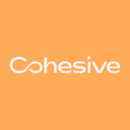7: In use
| |
|
|
|
|
|
|
|
|
|
|
|
'In use', sometimes referred to as 'operation', describes the period after any defects have been rectified and fine tuning carried out when the development is in 'normal' operation. The need to initiate new projects might be identified during this stage.
Tasks
If it has not already been done, an asset information model (AIM) is developed from the as-constructed project information model (PIM), or the PIM is used to add to an existing AIM. The asset information model compiles all the data and information related to, or required for the operation and maintenance of the completed development.
If they have not already done so, the employer should appoint an asset information manager and establish an asset information management process (IMP) setting out detailed procedures for creating, receiving and exchanging information and maintaining the asset information model. Any training needs should be identified.
The model may be developed to include information from post occupancy evaluations, metered performance information, actual in-use costs, remote monitoring information and so on. Object information in the model may be developed to include operational information such as maintenance records and replacement dates. There may be two-way connections between the model and enterprise systems used by the employer, such as purchasing systems, performance reporting systems and work scheduling systems.
Changes to the model may be triggered by activities such as; planned or reactive maintenance, repairs, refurbishments or upgrades, replacement, decommissioning, risk assessments, performance evaluations, changes in regulations, changes in the party responsible for maintaining or operating the asset, and changes in ownership.
Where contractors or in-house teams are appointed to carry out works to the development, asset information requirements (AIR) should be developed defining the information that is required for the asset information model and how it should be prepared.
Where new projects are commissioned, new employer’s information requirements may be developed alongside a new project information model which may initially be populated by a subset of the asset information model.
Ongoing post occupancy evaluations may be undertaken to assess how the asset performs in relation to business objectives and to compare findings with other assets and industry standards.
The table below sets out examples of plain language questions that an employer might ask at this decision point and the information they might require to answer them.
| Plain language questions | Information required |
|
Is new information compliant with the asset information requirements? Is the information management process operating correctly? Is any training required? Is the development operating satisfactorily? Are any changes necessary? |
Asset information model. Information management process. |
--Cohesive
BIM Directory
[edit] Building Information Modelling (BIM)
[edit] Information Requirements
Employer's Information Requirements (EIR)
Organisational Information Requirements (OIR)
Asset Information Requirements (AIR)
[edit] Information Models
Project Information Model (PIM)
[edit] Collaborative Practices
Industry Foundation Classes (IFC)







Comments
Extremely long, my experience of BIM is it collates all materials and specifications of each appliance, so that during service it breaks say, a component, it can easily be found make and type from the model
this key requirement of BIM is not highlighted here